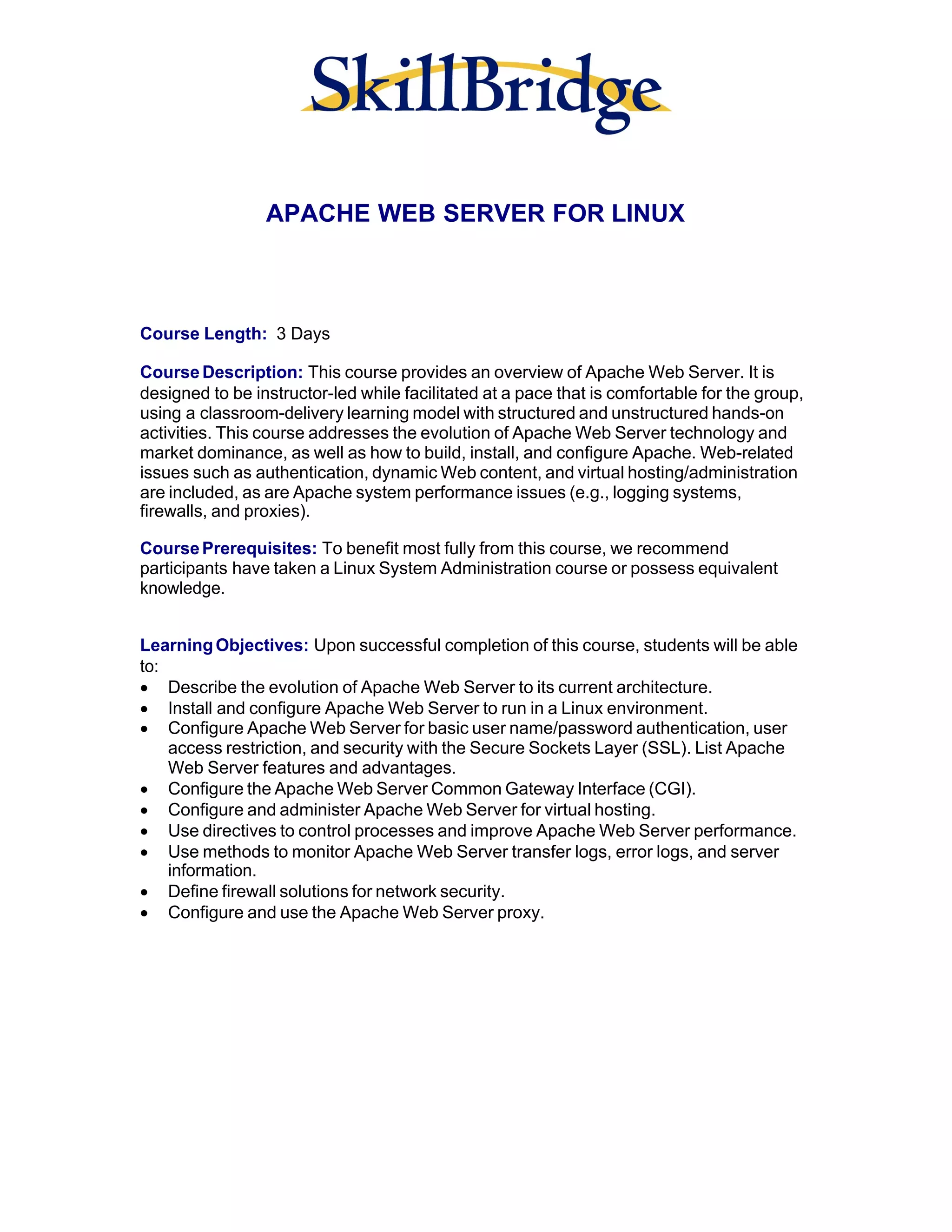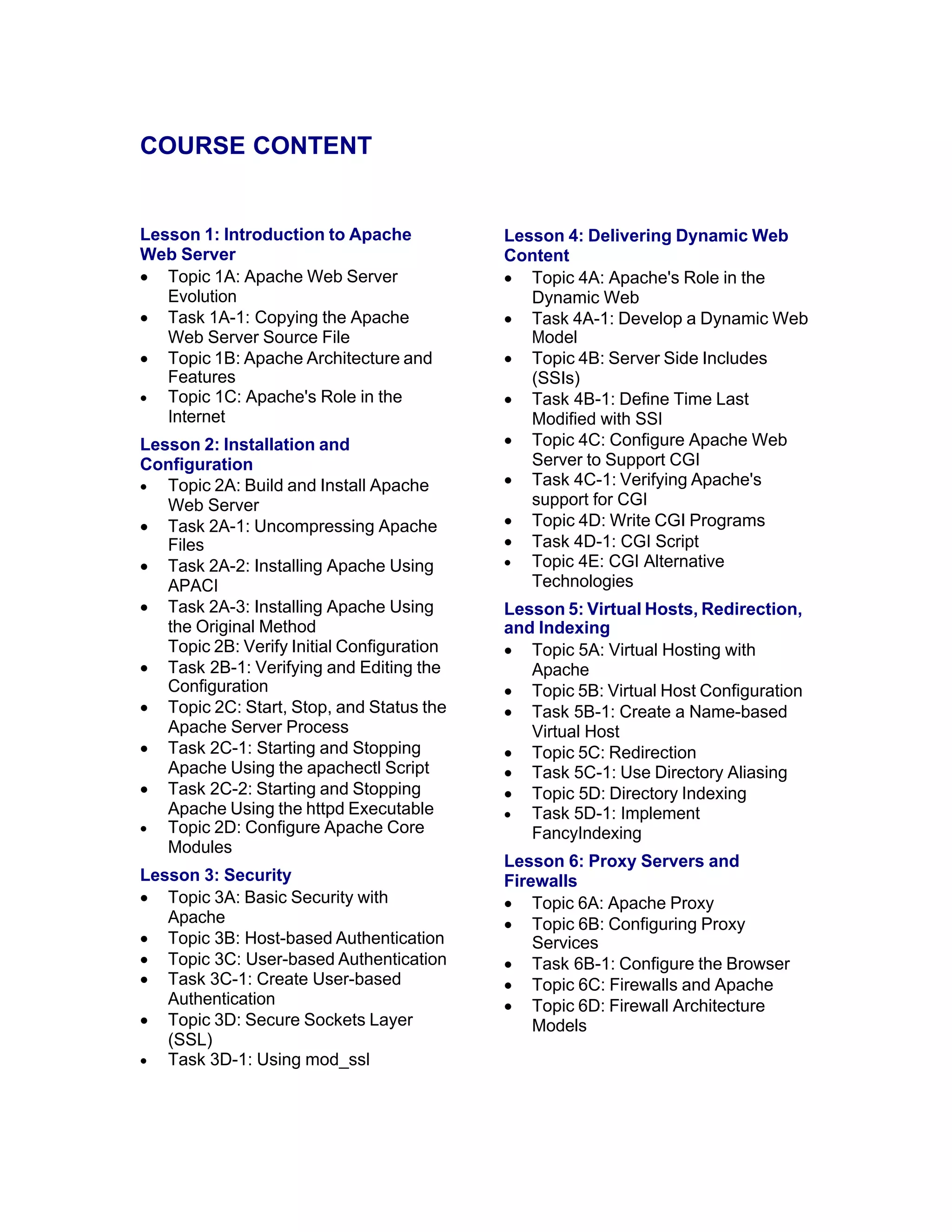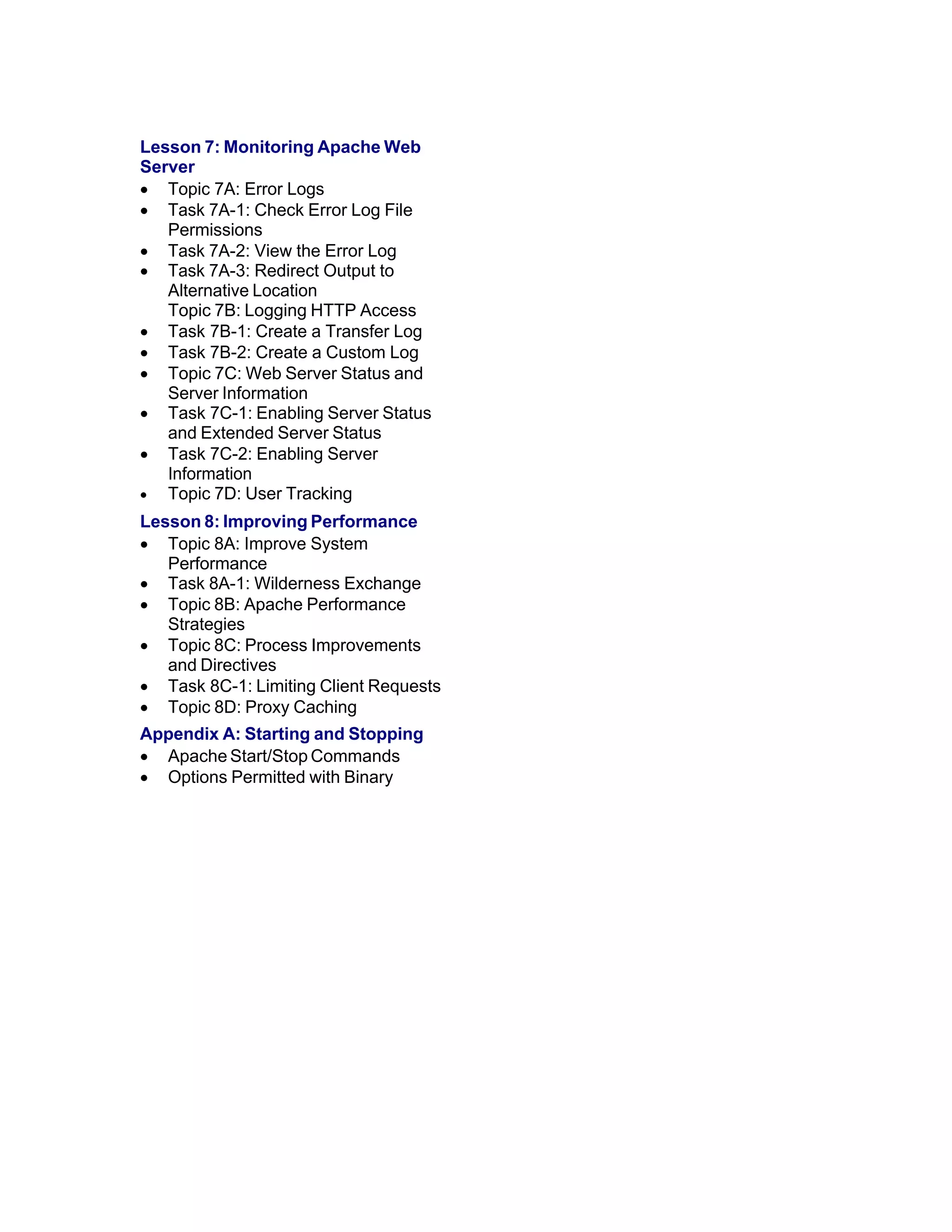This 3-day course provides an overview of installing, configuring, and administering the Apache Web Server on Linux. It covers topics such as installing and configuring Apache, adding security, supporting dynamic and virtual hosting, using proxies and firewalls, and monitoring and improving performance. Participants should have prior Linux system administration experience. Upon completing the course, students will be able to install, configure, secure and manage all aspects of the Apache Web Server.


